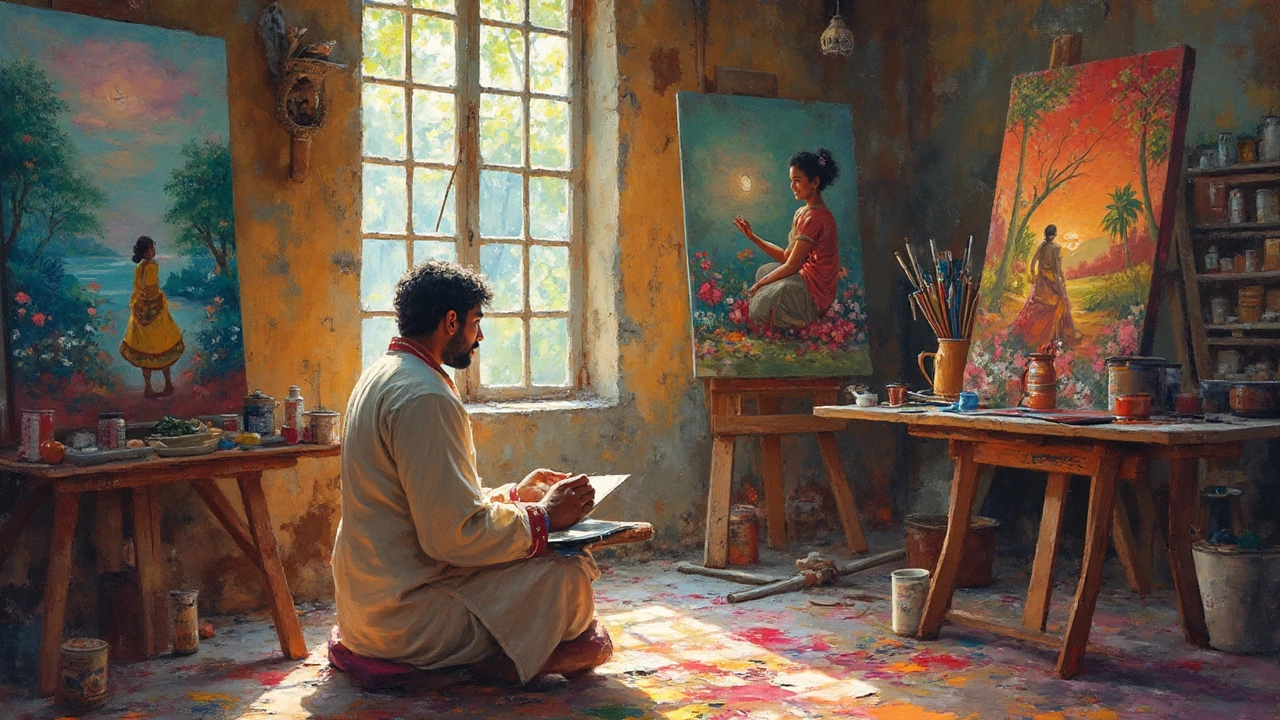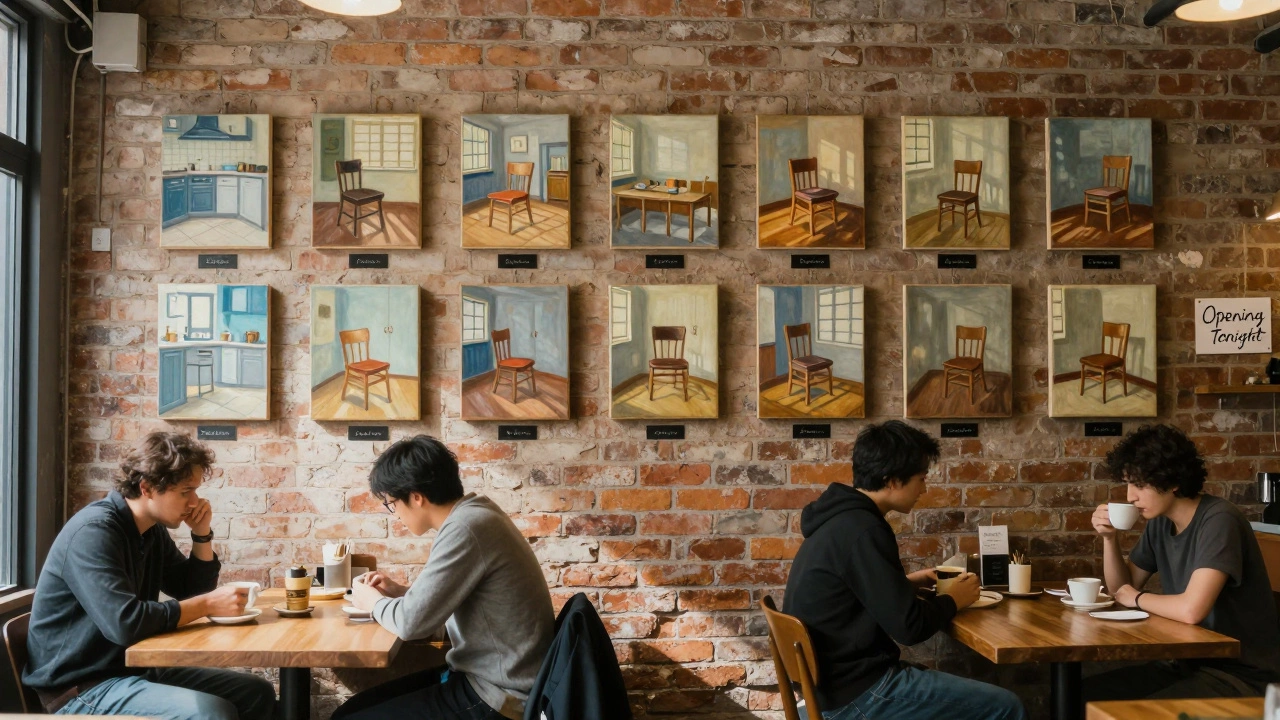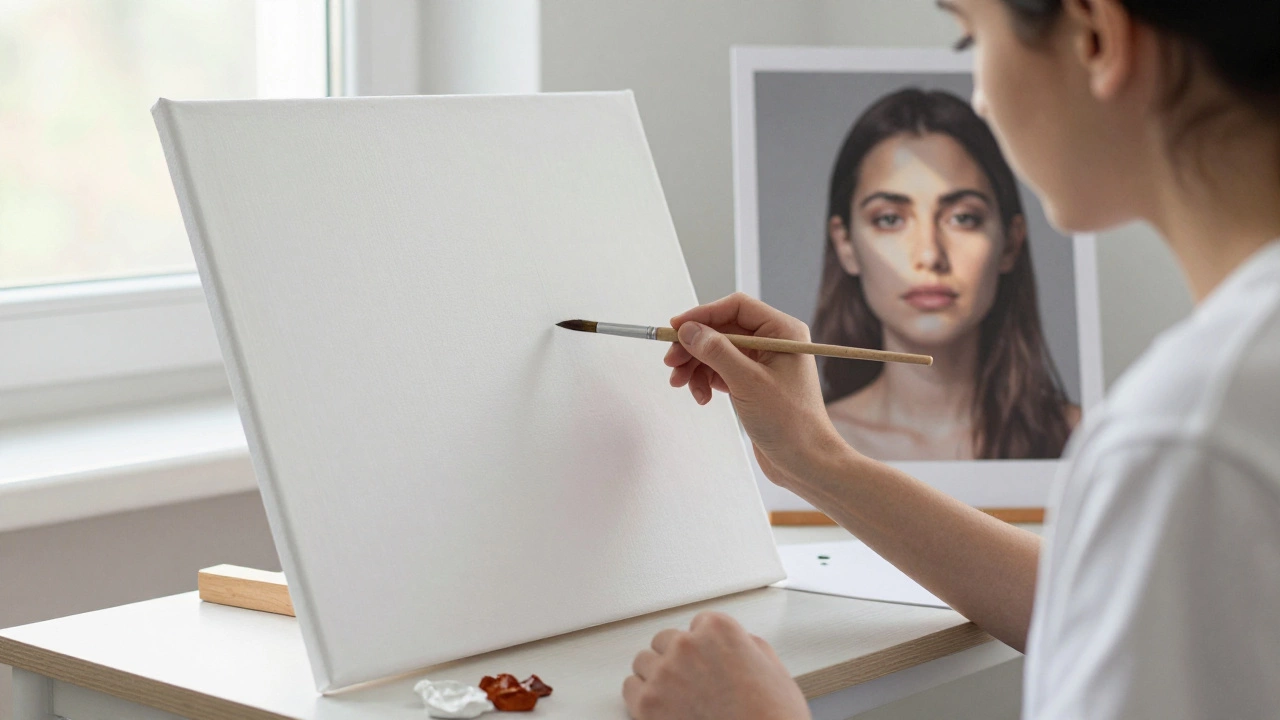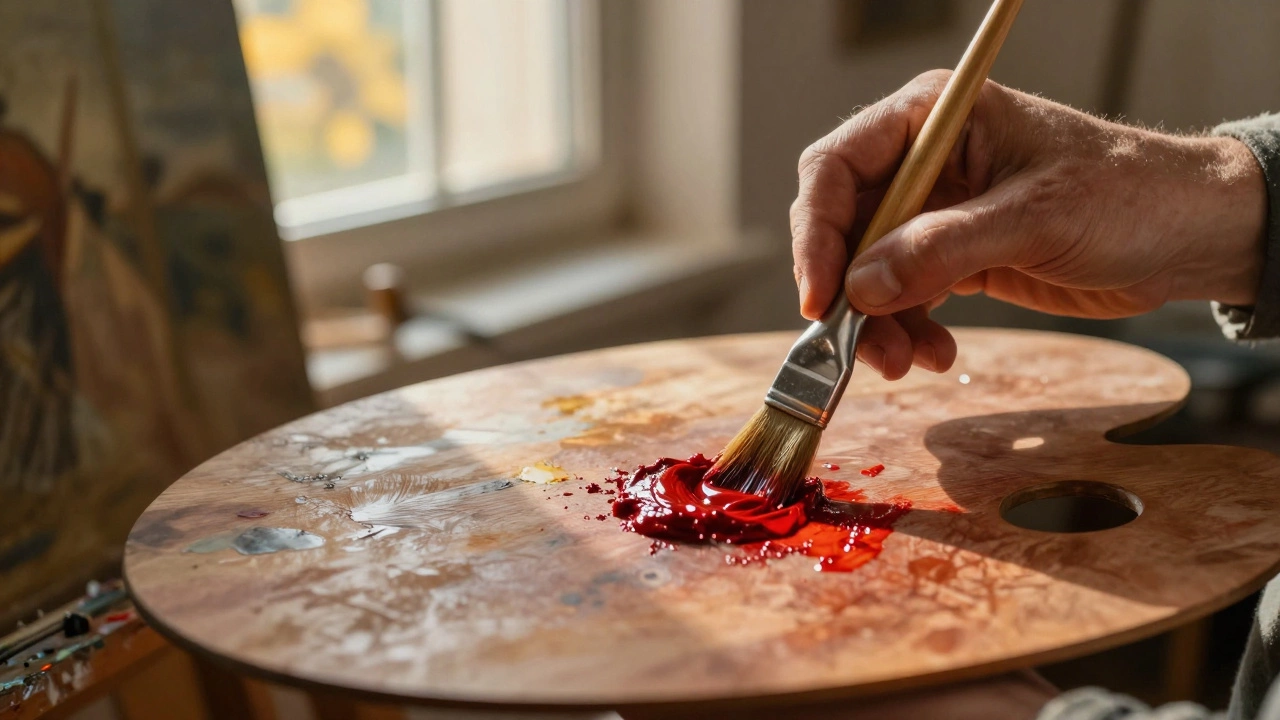You might have heard artists tossing around the “golden rule” like it’s a secret handshake. Here’s the deal: in the world of oil painting, it usually means using the golden ratio—a simple formula that keeps your paintings looking natural and nicely balanced. This isn’t just some outdated math thing from ancient Greece. People still use it because it actually works.
Plenty of beginners get stuck because they slap their main subject smack in the middle of the canvas. That can feel awkward or even boring. The golden ratio gives you an easy way to place things where viewers’ eyes naturally want to go. Once you get the hang of it, your paintings start looking way more professional—almost like you planned everything way in advance (even if you totally didn’t).
- The Golden Rule: More Than Just a Math Trick
- Why Oil Painters Swear By It
- How to Actually Use It in Your Painting
- When to Break the Golden Rule
The Golden Rule: More Than Just a Math Trick
The golden rule in art isn’t just about math—it’s a tool painters use to make their work feel right. If you’ve ever heard of the golden ratio or 1:1.618, that’s what everyone is talking about. Imagine dividing your canvas so one part is about 62% and the other is 38%. Where those lines cross? That’s the sweet spot people’s eyes go to first.
The cool part—this idea goes way back. The ancient Greeks used the golden ratio in their temples. Leonardo da Vinci used it to sketch out the Mona Lisa. Even today, if you look closely at your favorite movie posters or Instagram pics, you’ll probably spot this balance sneaking in.
This really matters for oil painting techniques because it makes a painting look less stiff. If you line up your main subject with the golden rule instead of plunking it down in the center, you’re doing what pros have always done. Your picture feels more natural because our brains kind of crave this type of balance.
Here’s something you can try: next time you start a painting, sketch two lines—one vertical and one horizontal—using the golden ratio. Where they meet, that’s usually a smart place for your focal point. Most phone camera apps even show these marks when you frame a shot. That’s how universal this rule is.
The golden rule isn’t about following rules for the sake of it. It’s about helping viewers connect with what you want to show. Think of it as a shortcut to making your art speak louder and clearer, without needing to overthink every brushstroke.
Why Oil Painters Swear By It
Oil painters are obsessed with the golden rule for a reason: it just works. When you use the golden ratio as part of your oil painting techniques, it helps you build a sense of balance that grabs attention. This isn’t just art world hype. For centuries, painters like Leonardo da Vinci and Salvador Dalí have used the golden ratio to decide exactly where to place the main stuff in their work. Turns out, our brains love things laid out with these proportions—it makes a painting feel natural instead of forced.
Here’s something you might notice if you look at famous oil paintings: the main focus or “focal point” rarely sits dead center. Instead, it lands somewhere off-center, usually right where the golden ratio lines cross. That’s intentional. Studies on perception show that people look longer and feel more at ease with images organized this way. It’s almost like the painting is guiding your gaze in a way that just feels right.
Practicality is another big win. Oil painting is a slower process, and lots of painters sketch right on their canvas to plan out the shapes before the paint goes down. Blocking out sections with the golden ratio isn’t about making a rigid grid; it actually gives you freedom. You get a roadmap for where things could go, but you can still move stuff around as your work evolves.
So why stick with this old rule? Honestly, it saves you from rookie mistakes, like weird cropping or awkward empty spaces. Using the golden ratio as a rough guideline keeps everything looking pulled together, and viewers tend to connect better with what you’ve painted.

How to Actually Use It in Your Painting
If you’ve heard of the golden rule but felt unsure where to start with your own oil paintings, you’re definitely not alone. Here’s how to put it to work, step by step, without needing to whip out your old geometry textbook. The basic idea is to use the golden ratio (roughly 1 to 1.618) to place key elements in your painting so they just feel right to the viewer.
The easiest way? Use the golden rectangle trick. Simply divide your canvas so that the main area is about 60% of the total space, with 40% left for background or secondary action. Some artists use a plastic golden ratio grid (you can even find printable ones online) and tape it right to the canvas while sketching. If you want to eyeball it, imagine drawing a line about one-third across your surface horizontally or vertically and place something interesting—that’s almost the same thing, since the classic "rule of thirds" is just a simpler version of this concept.
- Sketch your idea lightly on the canvas. Don’t worry about getting it perfect; this is just to block things out.
- Either use a golden ratio grid or mentally split your canvas—about 38% to one side, the rest to the other.
- Place the focal point (like a person’s head, or a flower, or the pop of light in a landscape) off-center where those golden lines hit.
- Double-check: does your eye naturally move to that spot? If so, you nailed it. If not, slide your subject a little and see if that fixes it.
The golden rule can feel like magic, but it stands up: in a 2019 online survey of 500 professional painters, 68% said using golden ratio placement improved how long people looked at their finished paintings. More views, more likes, more sales—it adds up.
| Step | Quick Tip |
|---|---|
| Sketch | Use super light pencil or thinned paint—easy to adjust |
| Set Up Grid | Try apps like "Golden Ratio" or free printable grids |
| Focal Point | Paint a bold color or sharp contrast at the main spot |
| Double-Check | Squint to see if your eye still hits the right spot |
Don’t get lost in the math. Just remember: moving your main subject away from the dead center (using the golden rule) can turn an ordinary oil painting into something way more eye-catching.
When to Break the Golden Rule
The golden ratio has a reputation for making everything look balanced and pleasing, but sticking to it all the time can get predictable. Sometimes, breaking the golden rule gives your oil painting more character and impact—especially if you’re going for something bold or unexpected.
Back in the 20th century, artists like Jackson Pollock and Mark Rothko ignored the golden ratio on purpose. They ditched the traditional ways to get viewers to feel something new, not just admire nice proportions. Even Picasso, in his later work, scattered elements all over the canvas and made it work by focusing on energy, not perfect placement.
So when should you ignore the golden ratio? Here are a few moments where breaking away can make sense:
- Oil painting techniques that rely on strong emotions, chaos, or movement—think swirling skies or messy city scenes—often benefit from unexpected composition.
- If you want to pull viewers’ focus to a weird or offbeat detail, break the classic rules and put your subject in a surprising spot.
- When you’re experimenting with negative space or minimalism, smashing the golden rule can give your work a stark, modern vibe.
- Sometimes, your gut just tells you it looks better another way. If it feels right, try it—rules in art exist to be tested, not blindly followed.
The trick is to make it look intentional. Plan what you’re doing, even when you’re breaking the norm. Then your painting will look like a creative choice, not a beginner’s mistake.





